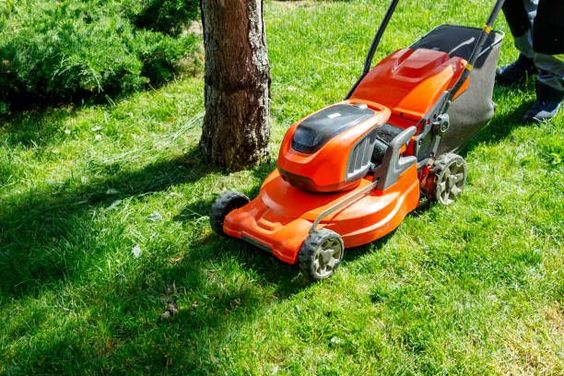The problem of sustainability and environmentally friendly living is increasingly urgent in the United States. The country faces numerous environmental challenges, ranging from climate change to pollution issues, that have serious consequences on public health and economic stability as a whole.
According to the American Lung Association’s 2023 “State of the Air” report, over 137 million Americans—about 40 percent of the population—live in counties with unhealthy levels of air pollution, which includes ozone or particulate matter.
And while the politicians are in debate, trying to strike a balance between economic interests and environmental protection, each of us can take a step toward a greener, more sustainable future through a few simple habits adopted in our daily lives.
10 Ways to Live More Sustainably
Bringing sustainable habits into your life can significantly reduce your ecological footprint. Start small, and you’ll be surprised at how these changes can positively impact your environment, benefiting not just your family, but future generations as well.
Educating Yourself and Others
Awareness is the first step toward change. When you understand the scope of environmental problems and recognize how your habits influence the world around you, you can consciously make better choices.
Continuously educate yourself on problems and best practices in sustainability to make positive contributions toward a greener way of life. For example, read books, attend webinars, join environmental groups, and share what you learned with friends, family, and colleagues to spread the word and motivate others.
You can even promote local sustainability efforts, such as community gardens, clean-up events, or advocacy for green policies, inspiring your community to engage in sustainable living. People unite with a common goal that will benefit them. It’s not difficult at all to find your neighbors’ contacts and invite them to join you.
Cutting Down on Energy Use
Did you know that replacing just five of your most frequently used light bulbs with LED versions can save up to $75 per year in energy costs? So, it’s wise to switch to LED bulbs, which use less energy and last longer than traditional incandescent bulbs.
Turning off appliances and other electronics when not in use will help reduce phantom energy consumption. When it’s time to upgrade, look for energy-efficient models with high Energy Star ratings. As a result, your household’s energy consumption decreases, and your utility costs go down.
Sustainable Eating
Eating more plant-based meals is an effective way to lessen your carbon footprint. The livestock industry has a major impact on greenhouse gas (GHG) emissions, deforestation, and energy consumption, all of which harm the environment. And the more we consume, the more we contribute to the destruction of our environment.
As you start small, try something like “Meatless Mondays,” where you go without meat one day a week. Support local farmers and choose organic produce to reduce the environmental impact of food production. Meal planning, proper food storage, and composting will help minimize food waste, which is a significant contributor to GHG emissions when it ends up in landfills.
Conserving Water
Yes, it’s a fact that a dripping faucet can waste more than 3k gallons of water per year if it drips once per second. So, fix leaks promptly; even small leaks could waste a significant amount of water over time. Install low-flow showerheads, faucets, and toilets to reduce water consumption without sacrificing performance.
Another good water-saving practice is collecting rainwater into a rain barrel and using it for gardening and outdoor cleaning, thus alleviating the strainon municipal water resources.
Reducing, Reusing, Recycling
Plastic waste is one of the most critical environmental problems facing the contemporary world, polluting land, oceans, air, and even food and human blood. At the same time, the United States is among the largest consumers of plastics worldwide, with only 5-6% of plastics recycled annually—a paltry figure.
Do your part in contributing to the solution. You can minimize single-use plastics with reusable water bottles, shopping bags, and containers. Bring your own bags to the grocery store instead of using plastic ones.
Buy used clothing, furniture, and electronics to diminish demand for new items and conserve resources. Following your local recycling guidelines ensures materials are recycled correctly to decrease the amount of waste sent to landfills.
Sustainable Transportation
Bicycles are a great means of transportation, beneficial for your health. By cycling rather than driving whenever possible, you will not only reduce emissions but also boost your physical activity levels. Walking is also good for bone and muscle strength. In addition, like any physical activity, it improves your mood due to the release of endorphins.
Bike or walk to work, or run errands on foot when they’re within a reasonable distance. If you sometimes prefer public transportation and carpooling over driving alone, you’re adding another healthy habit to your green transportation routine. Further, a fuel-efficient or electric vehicle will drop your carbon footprint dramatically.
Waste Reduction
Composting organic waste like food scraps and yard waste reduces landfill waste and yields nutrient-enriched soil for gardening. Create a small compost bin in your backyard or even indoors if space is limited.
Opt for products with minimal or no packaging, and avoid items wrapped in plastic. You can also prepare your own cleaning products using natural ingredients like vinegar, baking soda, and essential oils. These substitutes for commercial cleaning products are much more friendlier to the environment.
Sustainable Shopping Habits
Supporting ethical brands oriented to sustainability, fair labor practices, and environmentally friendly materials is a conscious choice that can make a big difference. Research companies before making purchases so that you know the ones that best align with your values.
Being a conscious consumer means thinking about whether you really need something before you buy it. For items you use infrequently, consider renting or borrowing instead of buying—this way, you’ll save money while reducing personal resource consumption.
Reducing Carbon Footprint
In 2023, the United States hit a record high for GHG emissions, including carbon dioxide (CO2). What can you do to help reduce your carbon footprint in the coming year?
First, consider purchasing carbon offsets for flying or driving long distances. When you buy a carbon offset, the money is used for reductions in GHG emissions that have already occurred. You are thus supporting renewable energy, energy efficiency, and reforestation.
Planting trees, which absorb carbon dioxide and help mitigate climate change, can also make a significant impact. If possible, go for a green energy provider or install solar panels to power your home with renewable energy, further reducing your reliance on fossil fuels.
Engaging in Sustainable Practices at Work
The trend toward reducing paper use is called “going paperless.” Don’t stay away: Go digital whenever possible and use both sides of the paper when printing.
Advocate for sustainability initiatives in your workplace, promoting energy-saving, waste-reducing, or green commuting options. For example, you could propose telecommuting policies to avoid the daily grind of employee commutation or set up a carpool system among employees.
Final Thoughts
The health of the planet depends on each of us. By developing the above habits, you move closer to a sustainable and eco-friendly lifestyle while encouraging others to do the same. Small changes in your daily routine will bring huge benefits to you and the environment in the long run.
Moreover, the more people acting to address current issues, the greater the collective impact will be, driving larger shifts in society toward a sustainable and healthy planet.











